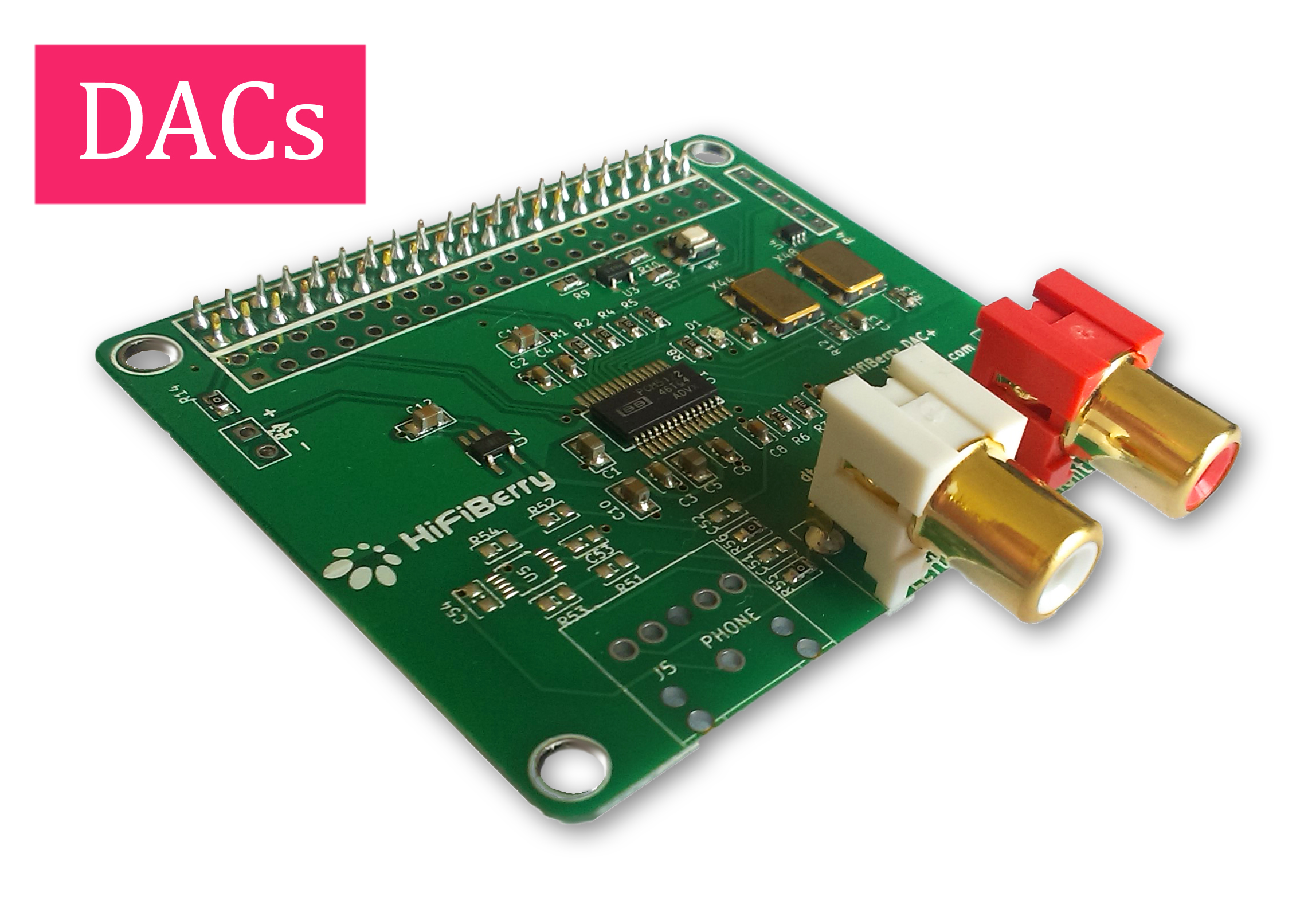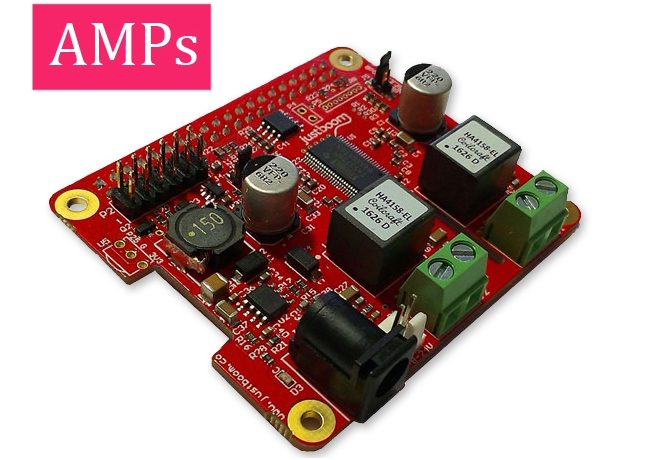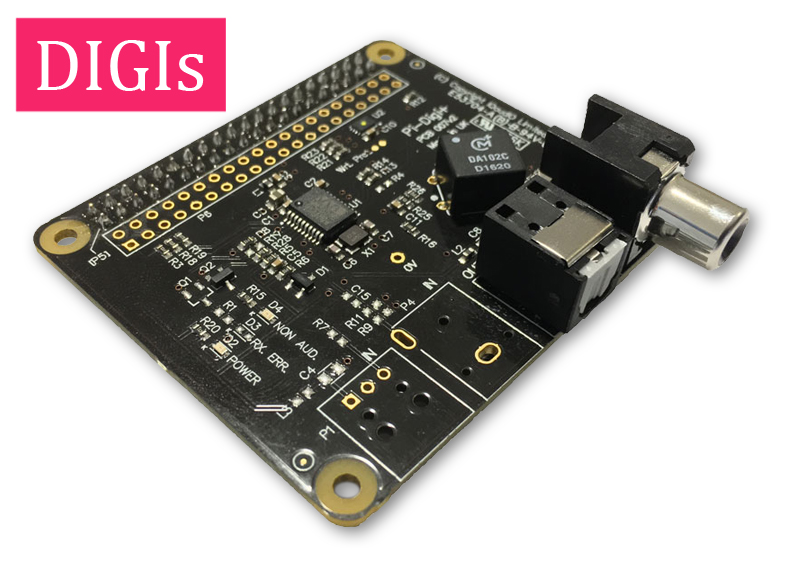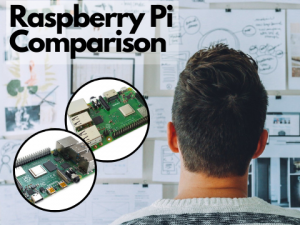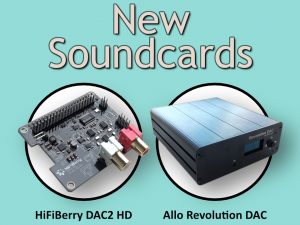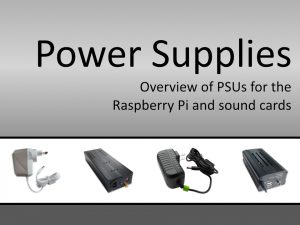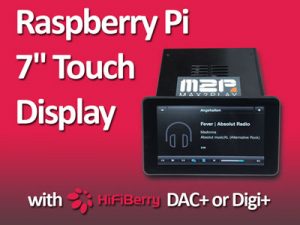Our range of items is growing steadily, which led to numerous questions concerning purchase decisions lately. To give you a better overview of our assortment, we implemented a comparison feature on our website. With this function, you can compare selected sound cards. Additionally, you will be able to compare all sound cards of one category with a single click.
Here you can find a short explanation of the content
Sampling rate/ resolution:
Generally, the chips can sample with up to 50MHz, the DACs with up to 384KHz. The chips recognize the sampling
rates of the sound cards automatically. The sampling rate is limited to 192KHz by the Raspberry Pi.
Signal-to-noise-ratio (SNR):
Ratio between the strength of the signal and interferences (112db signal = 1db interference noise)
Output:
Stereo (2.0): 2-channel analogue stereo
Stereo (2.1): 2-channel analogue stereo + subwoofer output
RCA digital: Digital output via RCA, which is later split into audio-channels by the amplifier.
TOSLink: (digital) optical output
Allo Volt Amo header: dedicated connection for „Volt Amp“ by Allo
BNC: connection for radio antenna
Output power:
Power in watts (for Amps) for given resistance
(Amps dedicated for an optimal impedance of (e.g.) 4 ohms can also be used for
speakers with higher or lower resistance, hits just changes the final output
volume, given the less or more power used to overcome the resistance)
Clock generator:
Synchronizes the output signals of the sound cards to reduce interferences.
Kali: external clock generator for Allo Piano DAC
Additional connections:
I2S Header: Is a direct connection to the pin-header or the Raspberry Pi. You can use it to connect
additional hardware to the RPI, like the rotary encoder. Not all pins on the I2S-header are available,
since some of them are already used by the the sound card itself.
GPIO: In the list, this term is used to describe preconfigured combinations of pins on the I2S-header.
They are soldered to separate connectors. Using these connectors, you can add extra hardware – like
the Allo Volt Amp to the Allo Piano DAC – without the effort of finding and soldering the correct pins yourself.
Piano audio out: dedicated GPIO connections for the Allo „Volt Amp“
IR-receiver:
IR: infrared
Vishay TSO: optional connection for IR-remote
Rotary encoder:
Used to control volume, tactile function included (i.e. for start/ stop)
This is a dedicated additional connection. You can still connect a rotary encoder to cards without this connection by
soldering it to the dedicated pins on the I2S-header.
Hardware features:
EEPROM: Used to save configurations (ATTENTION: this feature is still in development on the Raspberry Pi).
Galvanic Isolation: protection against interferences by radio frequencies
ALSA controls for sound card (driver):
ALSA: Is a driver for your sound card, that is based on Linux. You can use it to change settings, such as
gain or volume.
Analogue Boost: gain (up to +6db); The gain regulates the sound cards input sensitivity. It should be set
to the highest possible setting without distortion at your sound cards highest output volume.
Playback Boost: additional gain (up to +0.8db)
Max2Play Software features:
Custom plugins: Sets your sound card to the optimal preferences and adds the web interface to change these
preferences to your Max2Play user site.
ALSA web control: Lets you change the configurations of your sound card easily via web-interface.
Power supply:
Sound cards with their own power supply power the Raspberry Pi as well, so you still only need one power supply.

